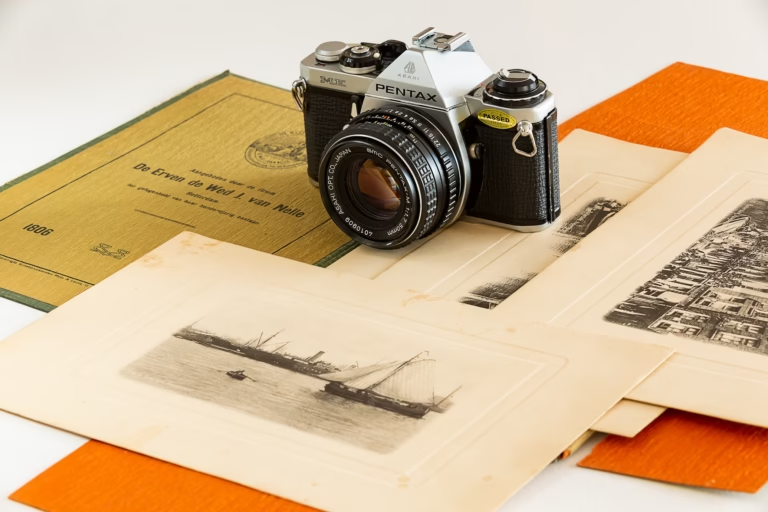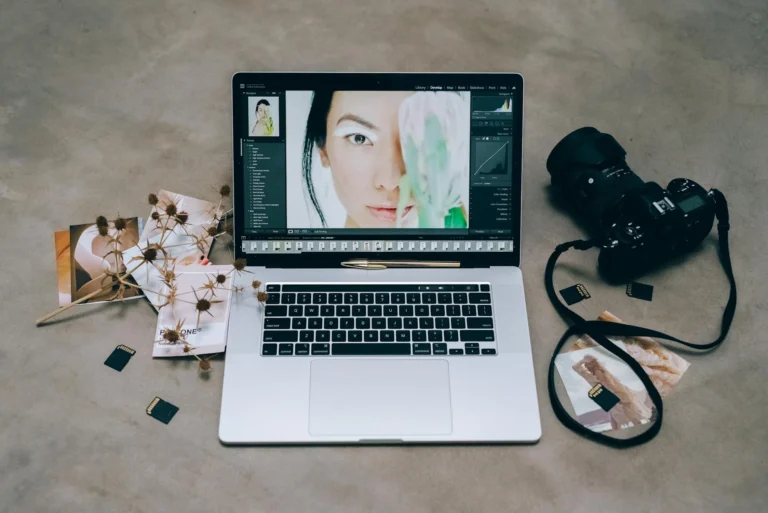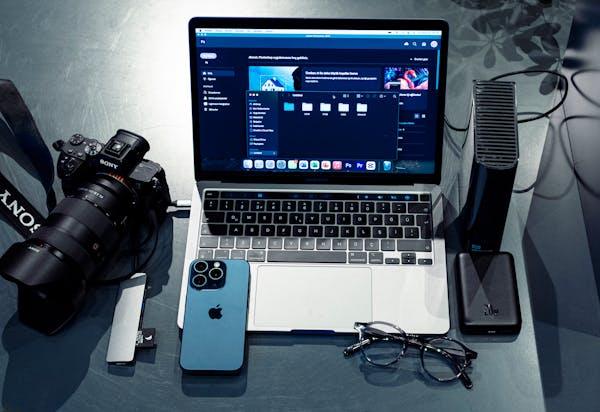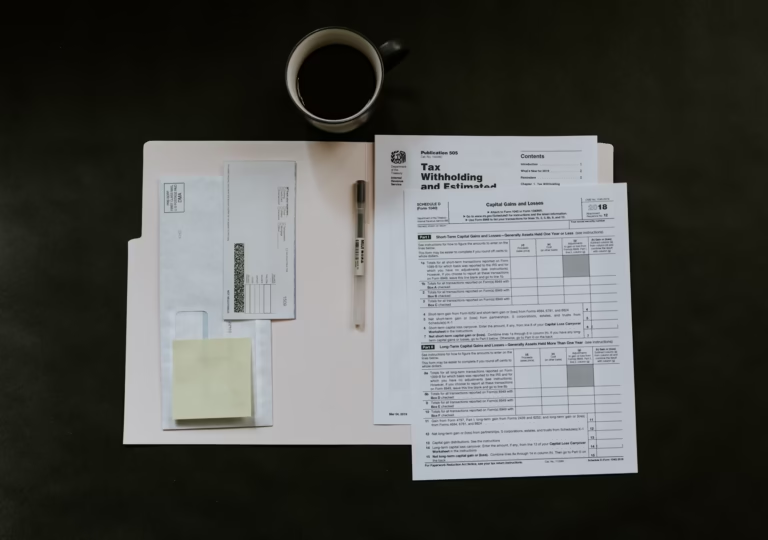
Is photography a good side hustle? Yes. That one word “yes” might not seem enough, but trust me, by the end of this article, you’ll understand exactly why photography is one of the best side hustles you can start today. I’ll take you through real reasons, relatable situations, and everything you need to know as a beginner.
Let me take you back a few years.
A friend of mine, Kemi, worked a regular 9 to 5 job at a bank. She was good at her job but it drained her. Every day felt like a repeat of the one before, and her creativity had no room to breathe. She needed a side hustle not just for money, but to feel alive again.
One day, she picked up her old DSLR camera, the one she got as a gift. She started taking photos of flowers, streets, and friends. Slowly, her pictures started getting attention on Instagram. People started asking, “Can you take pictures at my birthday?” “Do you do weddings?”
Fast forward to today: Kemi still works her 9 to 5, but her weekends are booked solid with photography gigs. She’s happier, more confident, and yes making solid income on the side.
That’s the power of a good side hustle.
Side hustles are no longer a luxury. They’re a necessity. With inflation, rising bills, and the need for personal fulfillment, many people are looking for ways to make extra income. But not all side hustles are created equal. Some require too much time, others too much money, and some just burn out quickly.
Photography is different.
Let me explain why.
Is photography a good side hustle?
Absolutely.
Photography has everything a great side hustle should have. Here’s why:
- Flexibility: You don’t need to quit your job. Photography works around your schedule. Most events are on weekends or evenings. You can choose when to work.
- Creativity: Photography gives you a chance to express yourself. It’s not just about clicking buttons. It’s about telling stories through images.
- Income: Yes, money. People are willing to pay good money for good photos. Events, portraits, products they all need high-quality images.
- Growth: As you get better, your prices go up. Your brand grows. You build a loyal customer base.
- Low starting cost: You don’t need the most expensive gear to start. A basic camera or even a good smartphone can do wonders in the beginning.
Photography doesn’t just help your wallet. It also helps your mental health. It pushes you to go out, meet people, learn, and create. That’s what makes it special.
Related Articles
Types of Photography
There are many kinds of photography, and some are more side-hustle friendly than others. Let’s break them down:
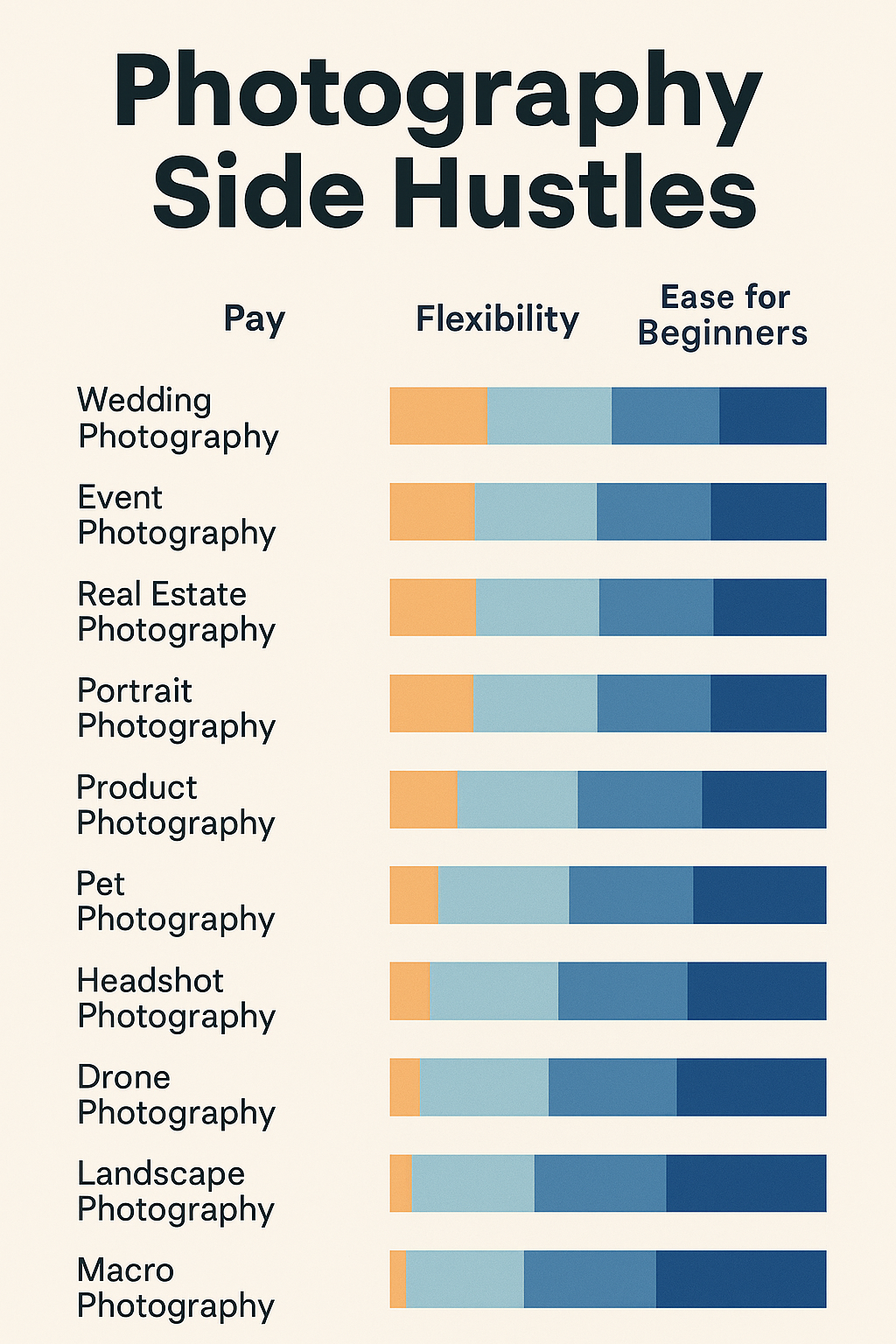
- Landscape Photography
Photos of mountains, beaches, forests, and more. It’s more about art than money. People sell prints or upload to stock photo sites. Not the best for quick income, but great for long-term passion. - Portrait Photography
Capturing individuals, couples, or families. This is one of the easiest ways to start making money. You can shoot in parks, studios, or even in clients’ homes. - Astrophotography
Photos of stars, galaxies, and the night sky. Beautiful, but requires special gear and late nights. More of a passion than a quick side hustle. - Nature Photography
Focuses on animals, plants, and wild landscapes. Similar to landscape photography, great for portfolios, but not as instantly profitable. - Macro Photography
Extreme close-ups of tiny subjects like insects or textures. Needs a macro lens. Fun and creative, but not often in high demand commercially. - Sports Photography
Action shots from live games. Pays well, especially at higher levels (like pro sports), but getting access can be difficult for beginners. - Architecture Photography
Captures buildings and interiors. Great for magazines, blogs, or real estate. It pays decently and can be done around your schedule. - Fashion Photography
Working with models and brands. Can be high-paying, especially for magazines or fashion brands. Competitive field, but with a strong style and network, it’s powerful. - Documentary Photography
Telling real-life stories through images. This can be powerful and emotional work. Not a quick-money field, but amazing for storytelling and building credibility. - Aerial Photography
Photos taken from planes or drones. Popular in real estate, agriculture, and tourism. Drones make it accessible, and it can be very profitable with the right clients. - Pet Photography
Capturing people’s furry friends. Fun, light-hearted, and surprisingly profitable. Many pet owners pay good money for great photos of their pets. - Drone Photography
Part of aerial photography. Useful for weddings, real estate, and commercials. Requires a drone and sometimes a license, but high-paying once you’re in. - Real Estate Photography
Photos of homes for sale or rent. Very profitable, doesn’t take too much time, and is often scheduled during the day, perfect for flexible side hustlers. - Headshot Photography
Professional photos for LinkedIn, acting, or business profiles. High in demand. You can book sessions on weekends or evenings. Easy to set up in a small space or studio. - Storm Photography
Capturing lightning, tornadoes, or extreme weather. Dramatic and risky. Not ideal for a beginner side hustle, but fascinating if you’re into adventure. - Flower Photography
Close-up or creative shots of flowers. Great for practice and creativity. You can sell prints or use them in graphic design, but it’s more passion-driven. - Product Photography
Taking pictures of products for brands or online stores. Very profitable. Can be done from home with a small studio setup. Growing in demand due to e-commerce. - Wedding Photography
Big money. Wedding shoots pay very well and are often booked months in advance. It requires trust, skill, and time, but one wedding gig can pay as much as a month of some side hustles. - Abstract Photography
Creative, often experimental. It sells as art prints or NFTs, but not a common commercial request. Great for portfolio building. - Event Photography
Covers birthdays, conferences, anniversaries, etc. Always in demand. Mostly done on weekends, which makes it a perfect fit for side hustlers. - Street Photography
Captures real-life moments in public. It’s raw and artistic. More about storytelling than income, though it can help build your brand and audience. - Travel Photography
Combines adventure and photography. You can sell images, write travel blogs, or work with tourism brands. Takes time to monetize, but can be a dream hustle if you love exploring. - Black and White Photography
More of a style than a niche. Adds drama and emotion to any genre, portraits, landscapes, street, etc. It’s not a money-maker on its own but adds flair to your work. - Editorial Photography
Used in magazines, newspapers, and blogs. Pays well but can be competitive. You need a unique voice and a strong story to stand out.
Which Type Pays Best?
- Wedding Photography and Event Photography often pay the highest per job. One wedding can bring in hundreds to thousands of dollars.
- Real Estate Photography and Product Photography also pay well and are more regular than weddings.
Which is Most Convenient for Side Hustles?
- Portrait Photography and Product Photography are easiest to schedule after work or on weekends.
- Headshot Photography and Pet Photography are fun, quick, and can be done locally.
- Real Estate Photography works great during the day if you have a flexible work schedule or work from home.
Here’s a visual chart comparing different types of photography by pay, flexibility, and how easy they are for beginners.
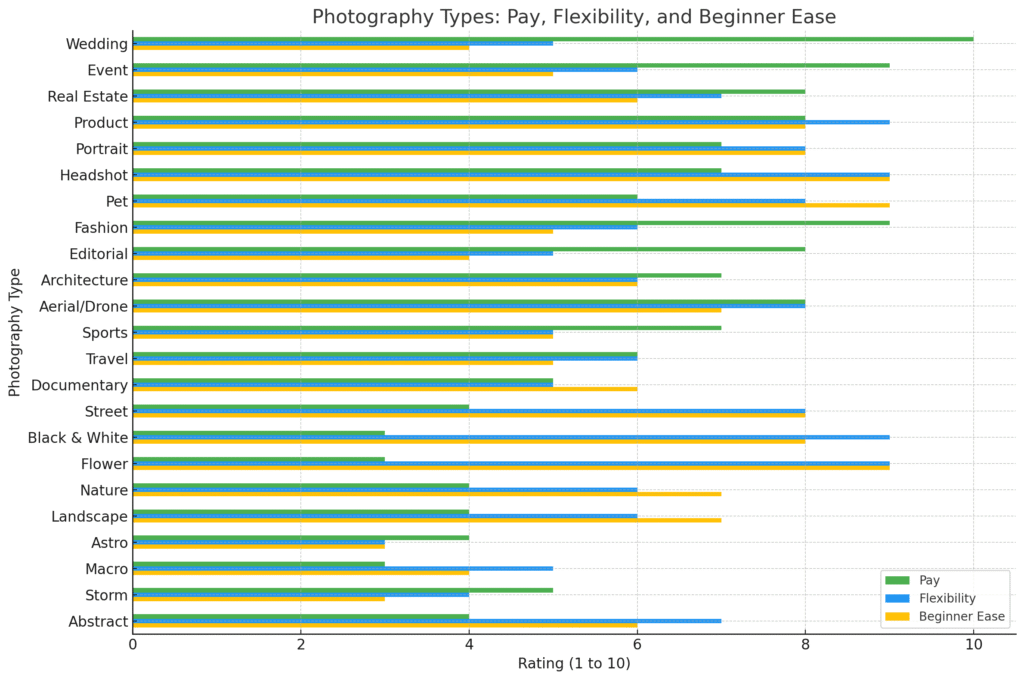
How to Start Photography as a Side Hustle
Starting small is the best approach. Here’s how you do it:
Requirements
- A Camera: It can be a DSLR, mirrorless camera, or a high-quality smartphone.
- Basic Editing Software: Start with free tools like Snapseed or Lightroom Mobile. Later, you can move to Adobe Lightroom or Photoshop.
- Time: At least a few hours a week to shoot, edit, and learn.
- Portfolio: Start taking free photos for friends or at events. Build a simple Instagram page or website.
- Learning: YouTube has thousands of free tutorials. Learn about lighting, composition, and editing.
- Marketing: Tell people. Share your work. Word of mouth works wonders.
Step 1: Get Your Camera Ready
You need a camera to start. But don’t stress about getting the latest model.
What you can use:
- A DSLR or mirrorless camera (if you already have one)
- A high-quality smartphone with a good camera (newer iPhones or Androids work great)
The key is to start with what you have and upgrade as you grow.
Step 2: Install a Basic Editing App
Editing brings your photos to life. You don’t need to be a wizard, just start simple.
Free editing tools to begin with:
- Snapseed (great for mobile editing)
- Lightroom Mobile (perfect for adjusting colors and lighting)
Once you’re more comfortable:
- Try Adobe Lightroom or Photoshop (for more advanced editing)
Learn one tool well before jumping to the next.
Step 3: Set Aside Time Weekly
Treat your side hustle like a real business, even if it’s just a few hours a week.
How much time to start with:
- 1–2 hours per week for learning
- 2–4 hours per week for shooting and editing
Use your evenings or weekends. Be consistent, even if you’re starting small.
Step 4: Build a Simple Portfolio
People need to see your work before they hire you. Start by offering free shoots to friends or volunteering at small events.
Start here:
- Take free portraits of friends or pets
- Shoot events like birthdays or family gatherings
- Post your best photos on Instagram
- Or use a free website builder like Wix or WordPress
Your early work is your practice ground. Every shoot adds to your portfolio.
Step 5: Learn as You Go
No degree needed, just curiosity and time. There are thousands of free tutorials online.
Where to learn:
- YouTube (channels like Mango Street, Peter McKinnon, and Jessica Kobeissi)
- Photography blogs
- Free photography courses on platforms like Coursera or Skillshare
Focus on the basics: lighting, angles, composition, and how to use your camera settings.
Step 6: Start Marketing Yourself
People can’t hire you if they don’t know you exist. Talk about your new side hustle. Share your work.
How to market:
- Tell your friends and family
- Post regularly on Instagram or Facebook
- Join local groups or community pages and offer your services
- Ask happy clients for referrals or testimonials
Word of mouth is your best friend when you’re starting out.
Note:
- Stay patient. Growth takes time.
- Take feedback seriously, not personally.
- Charge low at first, then raise your prices as your skill and demand grow.
What Are the Limitations?
No side hustle is perfect. Photography has its challenges too:
- Time Management: Juggling your main job and photography gigs can be hard. Planning ahead is key.
- Initial Investment: While you can start small, eventually you may need to invest in better equipment.
- Client Expectations: Some clients can be demanding or unclear. Good communication helps.
- Competition: Many people are into photography. But remember, your style is unique. That’s your superpower.
- Editing Takes Time: After every shoot, you need to spend time editing. It can be time-consuming, but it gets easier with practice.
Conclusion
So, is photography a good side hustle?
Without a doubt.
It’s flexible, creative, and profitable. It lets you start small and grow at your own pace. It connects you with people, improves your skills, and can even turn into a full-time career one day.
If you have a camera, a curious mind, and a few hours a week, you have everything you need to begin.
Remember Kemi? She didn’t start as a pro. She started with curiosity and a camera.
You can too.
So pick up that camera. Tell your story. And maybe, just maybe, you’ll find something more than a side hustle.
You’ll find a passion.

